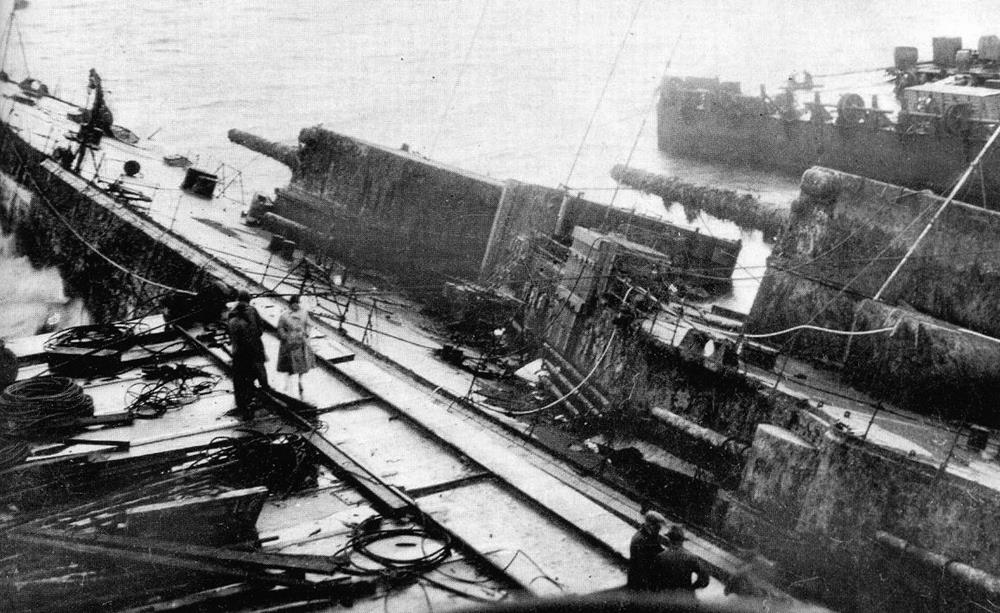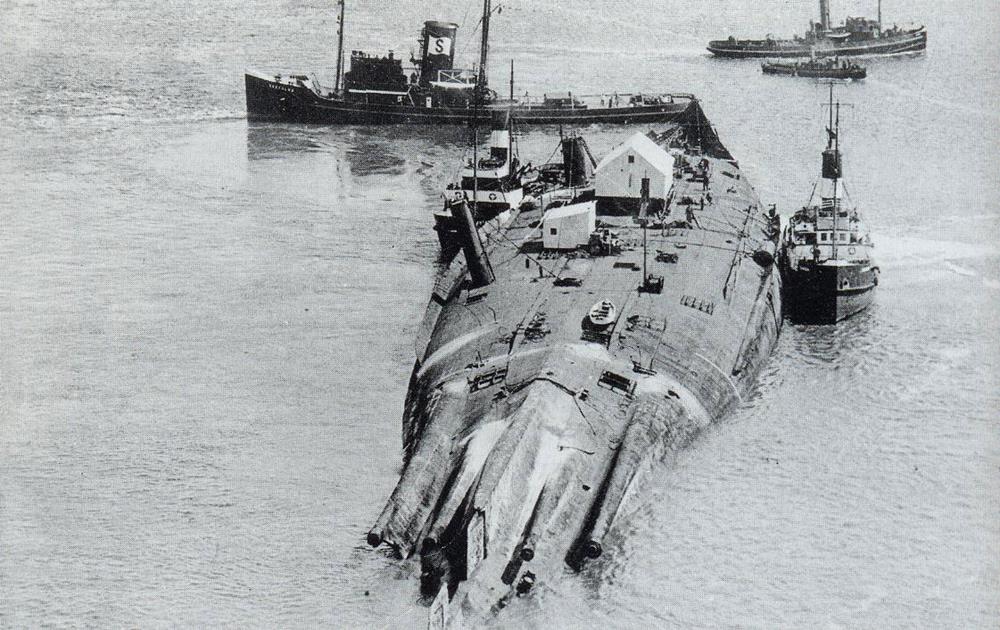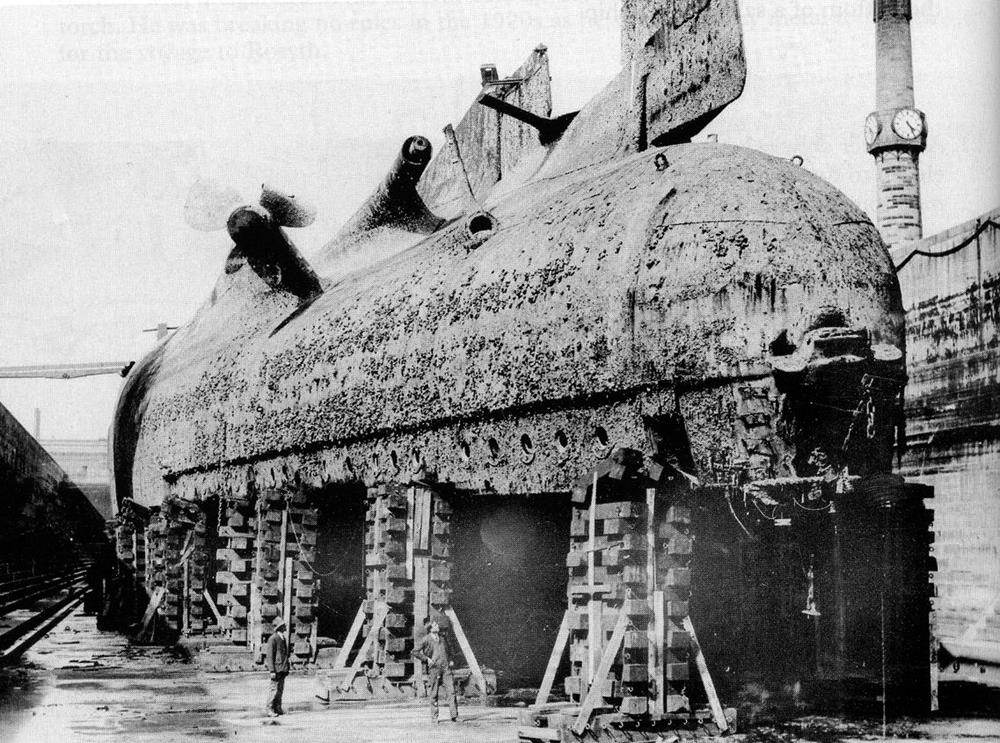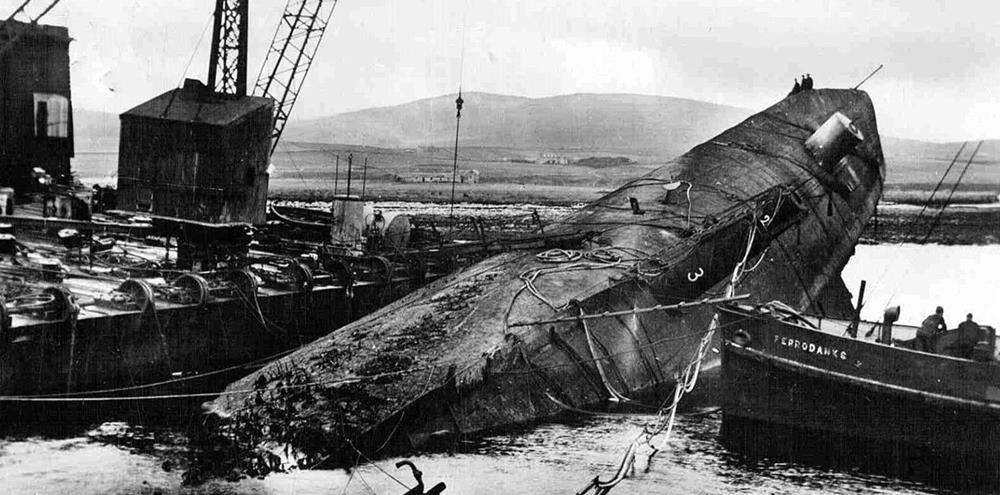47 – Raising the capital ships – Cox and Danks
By November 1924, Robertson lifted the last of his four destroyers. Cox had lifted six and now had the fleet to himself, but suspended operations over winter. From spring 1925 to April 1926, Cox raised his remaining fourteen destroyers, and then turned his attention to the big ships.
They were too heavy to lift with cables and winches, so Cox decided to seal the holes and pump in compressed air to displace sea-water, allowing the ships to rise to the surface.
Hindenburg seemed to be the easiest to tackle as she was resting the right way up in relatively shallow water. Quick setting cement was used to seal the sea valves on her bottom, and then work began on patching the 800 holes in her side and deck.
In September 1926 water was pumped out and she rose to the surface and was moored to the floating dock. However an overnight gale set the dock rolling, and damaged the generators that powered the pumps. The ship had to be allowed to sink again.

Hindenburg heeling over after the first attempt to raise her.
Further attempts were abandoned as winter set in, and Cox turned his attention to the battlecruiser Möltke.
The ships were subdivided into sealed sections, each entered from the surface through a long air lock. This allowed Cox to adjust the trim of the ships as they were raised. Möltke was the first to be raised, in 1927. She was towed then 200 miles to the dry dock in Rosyth to be broken up.

Möltke in the Forth
In the Forth, arrangements had been made for an Admiralty pilot to meet the tugs off Inchkeith. However a Firth of Forth pilot arrived first, and an argument ensued.

A 5-knot tide carried Möltke and the tugs upstream towards the Forth Bridge, with the tugs on one side of the central pier and Möltke on the other. The tow rope had to be cast off leaving Möltke to drift under the Forth Bridge.
Happily she passed safely under the central span; the tugs got her back under control and she was delivered safely to Rosyth. There she was handed over to the Alloa Shipbreaking Company to be broken up for scrap.
Seydlitz was lying on her side and Cox elected to raise her on her side in 1928.


She encountered severe storms on the way to dry dock in Rosyth.

Seydlitz in the dry dock at Rosyth
Cox used the same process to raise a further five ships – Kaiser and Bremse in 1929, Hindenburg (finally) in 1930, Von der Tann and Prinzregent Luitpold in 1931.

Bremse being raised

Von der Tann
Cooking sleeping and eating quarters for the runner crews were erected on each hulk, along with an engine room housing compressors which kept the ships topped-up as necessary on the long tow south.

Prinzregent Luitpold runner crew and their mess quarters – the “Hotel Metropole”
| < 46 – Raising the sunken destroyers |
| Δ Index |
| 48 – Raising the capital ships – Metal Industries > |
top of page
